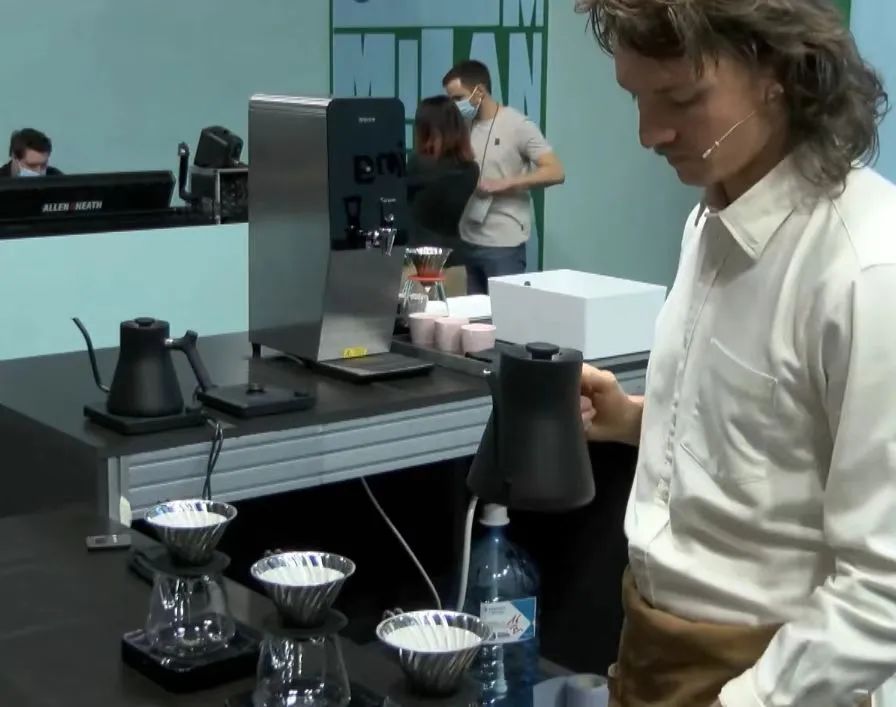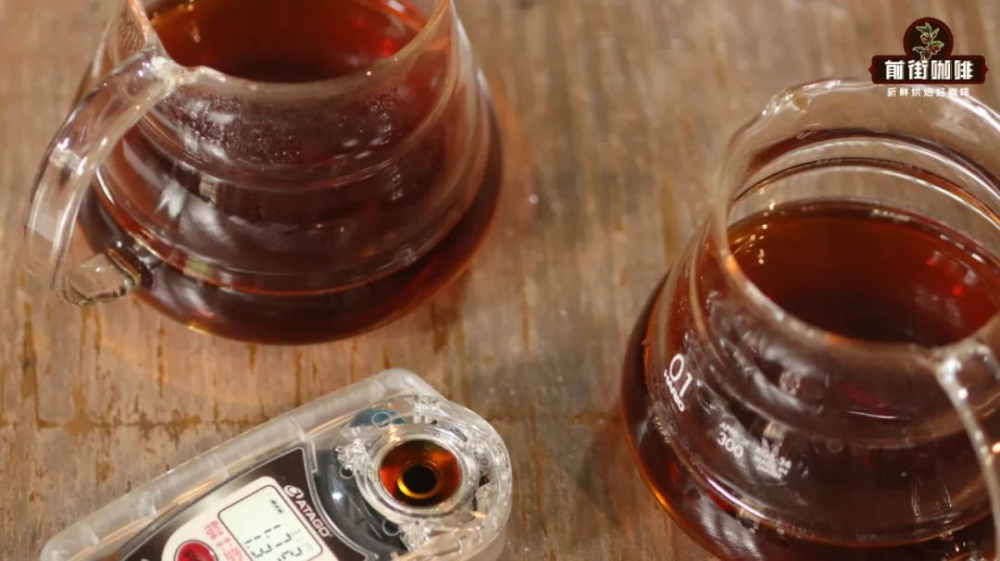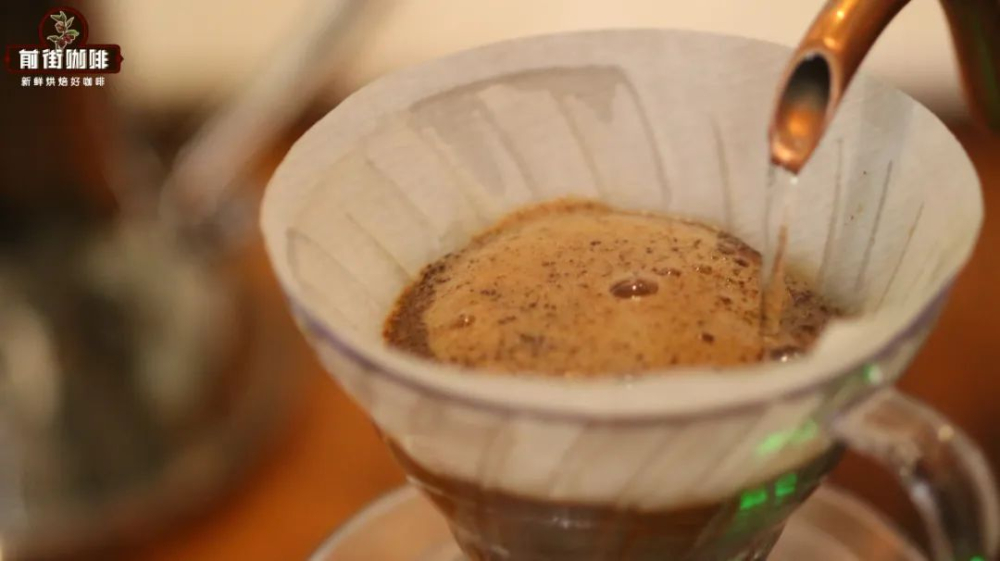How warm is the water for hand-brewed coffee? Effect of brewing temperature on coffee flavor and taste
In the last two years, contestants who can frequently see coffee competitions use variable temperature brewing, that is, the first half is brewed at a high water temperature and the second half at a low water temperature. What is the secret of this way of changing the temperature of the water?
Qianjie remembers that variable temperature cooking was not proposed recently. The three-warm cooking method invented by Mr. Wu Zelin earlier was one of the methods of variable temperature cooking. He did this:
On the basis of 16 grams of coffee powder, 240 milliliters of water were injected into 4 segments, of which each segment was 40, 80, 80 and 40 milliliters respectively. The water temperature used in the first two stages is 94 degrees Celsius, the third paragraph is 90 degrees Celsius, and the last stage is 80 degrees Celsius. To form a step-by-step variable temperature extraction.
Matt Winton, the champion of WBrC in 2021, also used the variable temperature extraction method in the final. Based on 20 grams of coffee powder, he injected a total of 300ml of water into five stages, each of which was 60,80,60,60,40 milliliters respectively. The water temperature used in the first three stages was 93 degrees Celsius, and the water temperature used in the last two stages was 88 degrees Celsius.

From the extraction concept of both, the amount of water close to the first 2 beat 3 is extracted at a higher temperature, and the rest of the water is extracted at a lower temperature, so Qianjie uses a similar method to compare the difference between variable temperature and constant temperature cooking. Qianjie, based on 15 grams of coffee powder, is divided into three sections with a total injection of 240 milliliters of water, each of which is 30, 120 and 90 milliliters respectively. The degree of grinding of coffee is medium-fine grinding (the pass rate of No. 20 sieve is 80%).

The temperature of the water used in the variable temperature group was 94 degrees Celsius for the first two stages and 88 degrees Celsius for the last stage. The initial water temperature used in the constant temperature group was 91 degrees Celsius. Friends who usually read the Qianjie article carefully noticed that the constant temperature group is not the cooking parameters normally used in Qianjie! Yes, it's like this. The purpose of this comparison in Qianjie is not to prove whether it is better to change the temperature or to keep the temperature constant, but to compare the difference in the flavor caused by the changing temperature, so the setting on the variable temperature is also ±3 degrees Celsius on the basis of 91 degrees Celsius. So the answer is to look at the result of the change. Coffee beans use Panamanian butterflies. After brewing, the front street first measured the concentration of the two groups, the measurement concentration is to determine whether the extraction rate of the two groups is close, if there is a great difference, then the temperature parameters need to be adjusted in the variable temperature group. Fortunately, the concentration of the variable temperature group was 1.34%, and that of the constant temperature group was 1.31%. There was little difference between the two groups, which could be compared.

First of all, let's talk about the flavor performance of the constant temperature group, which is the soft flavor of berries, honey and the aftertaste of oolong tea. In contrast, the flavor of the variable temperature group was stronger, the sour and sweet feeling of the berry was more obvious at the moment of the entrance, the acidity was brighter, and the sweetness of honey was weaker. Yu Yun is more like green tea. How to understand the flavor change caused by changing temperature. Qianjie adds two knowledge points, which I believe everyone can easily understand. First, in fact, the constant temperature group in the comparison is also variable temperature. The temperature we are talking about when making coffee is actually the initial temperature at the beginning of water injection, and the water temperature in the kettle will slowly decrease over time. If the initial temperature of 91 degrees Celsius is also divided into the first two stages and the last stage, then the temperature at the beginning of the last stage is about 89.5-90 degrees Celsius (the water temperature at 1 minute and 20 seconds). Second, using a higher water temperature can flush out more coffee substances. But there is a risk that it is easy to produce bitter taste. But when we understand the extraction of flavor substances, we first extract more sour substances, followed by sweet substances, and finally bitter substances. As a result, the water temperature can be divided into the first half and the second half.

In the first half, higher water temperature was used to extract more sweet and sour flavor substances from coffee, while in the second half, the water temperature should be reduced to reduce the release of flavor substances. In order to achieve a strong flavor performance. To switch to another theory, in fact, variable temperature extraction only artificially widens the temperature difference during coffee extraction. Although we all understand the truth, it is difficult to find out which high temperature and low temperature brewing is actually used and how to allocate water. It takes a lot of testing. Admittedly, the high and low temperatures used in the comparison made by Qianjie today do not match well with other cooking parameters, and the overall sensory performance of the constant temperature group is better.
Important Notice :
前街咖啡 FrontStreet Coffee has moved to new addredd:
FrontStreet Coffee Address: 315,Donghua East Road,GuangZhou
Tel:020 38364473
- Prev

Panama BOP Champion Melon Fruit Estate Sun-treated Rose Summer Coffee Bean Flavor Characteristics Brewing Parameters
The 2022 Best Panama (BOP) race rankings have been announced! In the 26th BOP Green Bean Competition, the champion of the washed rose summer group was won by Panama Aurora Manor, and the sun rose summer group was won by Guanjun Panama Hartman Family Melon Fruit Manor. Front Street Coffee at BOP 2022
- Next

Introduction to the three extraction stages of espresso what is the taste of espresso espresso
In the past, when sharing the knowledge of making espresso, Qianjie paid great attention to explaining the preparation steps before putting the handle on the head, such as cloth powder and pressing powder, which are operable and have a great impact on coffee. After buckling the cooking head, turn on the cooking button and leave the rest to the machine. But we also
Related
- Beginners will see the "Coffee pull flower" guide!
- What is the difference between ice blog purified milk and ordinary milk coffee?
- Why is the Philippines the largest producer of crops in Liberia?
- For coffee extraction, should the fine powder be retained?
- How does extracted espresso fill pressed powder? How much strength does it take to press the powder?
- How to make jasmine cold extract coffee? Is the jasmine + latte good?
- Will this little toy really make the coffee taste better? How does Lily Drip affect coffee extraction?
- Will the action of slapping the filter cup also affect coffee extraction?
- What's the difference between powder-to-water ratio and powder-to-liquid ratio?
- What is the Ethiopian local species? What does it have to do with Heirloom native species?

